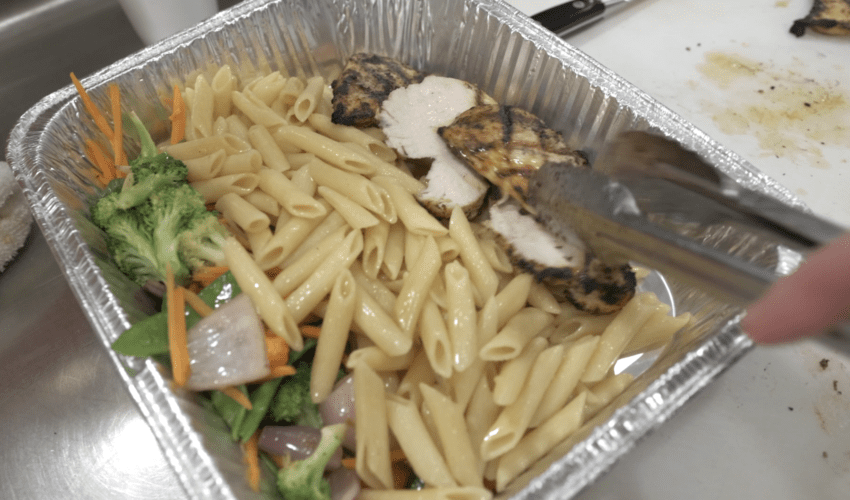Having charitable thoughts this holiday season? What you need to know to make your gift count
Dec. 3, 2018
This paid piece is sponsored by Eide Bailly LLP.
By Laurie Hanson, CPA, tax manager
Are you feeling charitable because it ’tis the season for giving? Or maybe you have extra cash on hand and you know sharing your wealth benefits both you and your favorite charity. Can you say tax deductions?
Before you write out that check or hand over the cash, know that when making donations of cash or property, it’s important to keep good records, provide proper documentation and understand the definition of “qualified appraisals” — something very important to the IRS.
For the past decade, taxpayers have been advised to follow proposed regulations regarding substantiation and reporting requirements for cash and noncash charitable contributions. In July 2018, the IRS finalized those proposed regulations, thereby creating the final regulations that the IRS will now use when assessing taxpayer compliance related to cash and noncash charitable contributions.
The final regulations, which had an effective date of July 30, 2018, largely adopted the proposed regulations, along with special guidance previously issued. The following discussion items are reminders of things a donor needs to consider when making a donation and, in some cases, things to obtain from a charitable organization to substantiate a donation deduction.
Cash and cash-equivalent donations
The final regulations detail the substantiation requirements for charitable contributions of cash, check or other monetary gifts, most of which did not change from the proposed regulations. For donations of less than $250, the donor must have a bank record or written communication from the organization showing the name of the recipient, the date of the contribution and the amount. For a donation of $250 or more, the donor must have a contemporaneous written acknowledgement from the organization. The contemporaneous written acknowledgement, which includes email, must include all of the following:
- The amount of cash and a description of any property given.
- Whether or not the organization provided any goods or services in consideration of the donation.
- A description and good-faith estimate of the value of any goods or services provided by the organization.
An acknowledgment will be considered to be contemporaneous if the taxpayer obtains the acknowledgment on or before the earlier of the date on which the taxpayer files a return for the taxable year in which the contribution was made or the due date, including extensions, for filing such return.
For contributions made by payroll deduction, the substantiation requirements are met if the donor obtains a pay stub, W-2 or other employer-furnished document that includes the amount withheld during the tax year for the payment to the organization and a pledge card or similar document prepared by the organization that includes its name.
Donations of property
Additional information is needed when a donation involves property. For donations of property, if each item of property donated is less than $250, the donor must either keep reliable written records that include the name and address of the recipient, the date of the contribution, a description of the property, the estimated fair market value on the date of the contribution, the method used to establish the fair market value and the condition of the item, or they can obtain a receipt from the organization. If the value of each property donation exceeds $250 but is not more than $500, a contemporaneous written acknowledgement must be obtained from the organization. For each property donation in excess of $500 but not more than $5,000, the donor must obtain contemporaneous written acknowledgement and file a completed Form 8283, Section A, with their tax return for the year of the donation.
Each charitable property donation of more than $5,000 requires contemporaneous written acknowledgement from the organization, a qualified appraisal prepared by a qualified appraiser and completion of Form 8283, Section B, including signature by the qualified appraiser and a person authorized to sign on behalf of the charitable organization. For a property donation of more than $500,000, a qualified appraisal of the property must be attached to the donor tax return filed for the year of the donation.
Qualified appraisal and qualified appraiser
The final regulations provide an updated definition of a qualified appraiser. “Qualified appraiser” means an individual with verifiable education and experience in valuing the type of property for which the appraisal is performed. Verifiable education and experience means the individual must have completed professional or college-level coursework in valuing the relevant type of property and have two or more years’ experience in valuing such property type or have earned a recognized appraiser designation.
Because appraisers may need time to meet the new education and experience requirements, the final regulation’s new appraiser requirements will apply to contributions completed on or after Jan. 1, 2019.
Qualified appraisal reasonable-cause exception eliminated
The proposed regulations provided a reasonable-cause exception if the donor had reasonable cause to believe the appraisal of a property was done by a qualified appraiser and, therefore, such appraisal should have been completed in a manner to meet the requirements to be a qualified appraisal. The final regulations eliminated this reasonable-cause exception. As a result, donors have been placed on notice and should request information from any appraiser being considered for engagement to complete a charitable contribution property appraisal to confirm the appraiser being considered will meet the requirements of a qualified appraiser.
Check your list twice
So before you start feeling charitable, remember the steps you need to take to make your donation count for you and your charity. Charitable donation substantiation requirements — those things needed to support the deductibility of a charitable donation — are the responsibility of the donor. However, charitable organizations are encouraged to provide written contemporaneous documentation of all charitable donations received when reasonably possible, even when not technically required, to maintain a positive donor relationship. Understanding the various charitable donation requirements for both a donor and organization can ensure that donors don’t miss out on the deductibility of their charitable donations and that organizations don’t miss out on future charitable donations.
Questions? Contact Laurie Hanson, a member of the Eide Bailly Exempt Organization Group, for information or assistance. Laurie can be reached at [email protected] or 605-339-1999.








